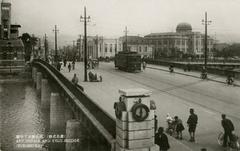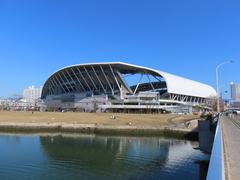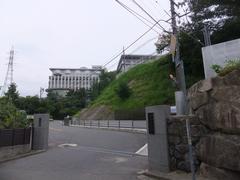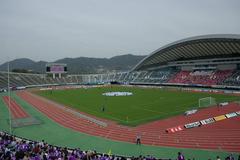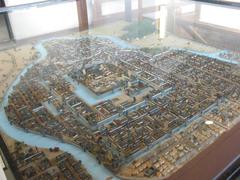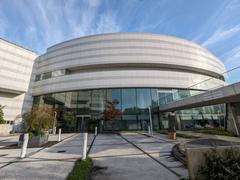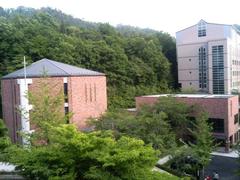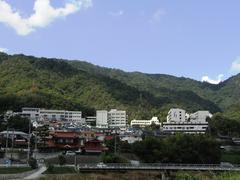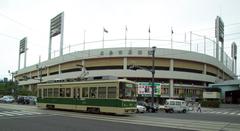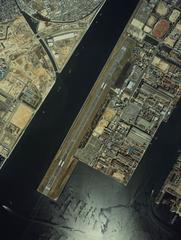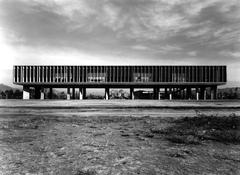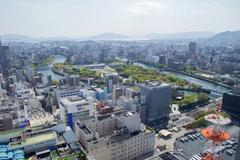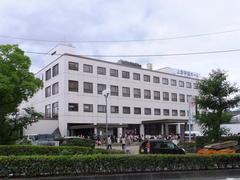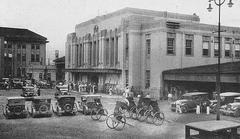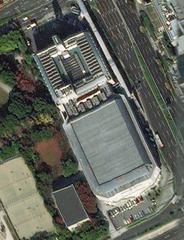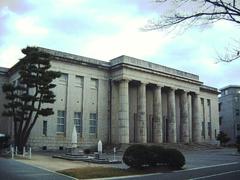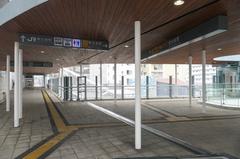Hiroshima Children’s Museum Visiting Hours, Tickets, and Travel Guide
Date: 04/07/2025
Introduction to the Hiroshima Children’s Museum
Nestled in the heart of Hiroshima, Japan, the Hiroshima Children’s Museum (広島市こども文化科学館, Hiroshima-shi Kodomo Bunka Kagakukan) is a vibrant center for education, science, culture, and community engagement. Established in 1980, the museum reflects Hiroshima’s resilient spirit and ongoing commitment to peace, offering visitors of all ages an imaginative space to explore interactive science exhibits, engaging workshops, and an impressive planetarium. Strategically located near significant historical landmarks—including the Hiroshima Peace Memorial Park and the Atomic Bomb Dome—the museum provides an enriching experience that weaves together learning, history, and play (GetHiroshima; Japan Experience; Travel + Leisure Asia).
Table of Contents
- Introduction
- Origins and Development
- Historical Context
- Cultural Significance and Educational Mission
- Practical Visitor Information
- Symbolism in Hiroshima’s Urban Landscape
- Impact and Visitor Experience
- Notable Exhibits
- Frequently Asked Questions (FAQ)
- Conclusion
- References
Origins and Development
The Hiroshima Children’s Museum was inaugurated in 1980 as part of Hiroshima’s post-war educational revival efforts. Built adjacent to the Hiroshima City Children’s Library and close to Peace Memorial Park, the museum’s founding mission is to foster curiosity and creativity in young minds through immersive experiences in science, technology, and culture. Its establishment marked Hiroshima’s transformation into a “City of Peace,” blending remembrance with a forward-looking vision for the city’s future (GetHiroshima; Japan Experience).
Historical Context
Hiroshima’s identity is deeply shaped by the atomic bombing of August 6, 1945. The museum’s creation in 1980 underscores the city’s dedication to peace education and hope. Its location, neighboring the Peace Memorial Park and other cultural sites, reinforces Hiroshima’s efforts to transform tragedy into a foundation for global peace and scientific advancement (Travel + Leisure Asia).
Cultural Significance and Educational Mission
Fostering Scientific Curiosity
The museum features a diverse range of interactive exhibits that introduce scientific principles such as electricity, gravity, and astronomy. Visitors can conduct hands-on experiments, measure speed, and challenge themselves in multi-level mazes. The museum’s fourth-floor planetarium, with its 20-meter dome, provides immersive space science shows that inspire children and adults alike (GetHiroshima; Japan Experience).
Community, Play, and Inclusivity
Serving as a local hub, the museum attracts families, school groups, and international tourists. Its central courtyard is a gathering spot for skateboarders and BMX riders, and the adjacent Hanover Garden offers green space for relaxation. Seasonal workshops, lectures, and community events celebrate both local traditions and global scientific discoveries (Joy in Hiroshima).
The museum welcomes all ages, with adults often revisiting exhibits with nostalgia. While most signage is in Japanese, the universal nature of interactive play and the availability of staff support make the facility accessible to non-Japanese speakers (Joy in Hiroshima).
Practical Visitor Information
Location and Accessibility
- Address: 5-83 Motomachi, Naka-ku, Hiroshima, Japan.
- Transport: Easily accessible via the Hiroshima Electric Railway (Hiroden) streetcar (“Genbaku Dome-mae” stop) and city buses. Paid parking is available nearby, though public transport is recommended.
Hours of Operation
- Open Tuesday to Sunday: 9:00 AM – 5:00 PM (last entry 4:30 PM).
- Closed Mondays (or the following day if Monday is a national holiday) and December 31–January 3.
- Confirm current hours and any special closures on the official website.
Admission and Tickets
- General Admission: Free for main museum exhibits.
- Planetarium/Special Exhibitions: 200–510 yen per person, depending on the event or program. Planetarium tickets should be purchased in advance during busy periods.
- Discounts: Available for children, students, seniors, and groups. Children under 3 are admitted free.
Facilities and Accessibility
- Wheelchair accessible with elevators and accessible restrooms.
- Stroller rentals, lockers (for a small fee), baby-changing facilities, and a nursing room available.
- Bilingual signage in Japanese and English; staff available to assist international visitors.
Amenities
- On-site café with light snacks.
- Gift shop with science-themed souvenirs and educational toys.
- Rest areas and picnic spots outside.
Travel Tips
- Arrive early on weekends or school holidays to avoid crowds and secure planetarium tickets.
- Combine your visit with nearby sites like Hiroshima Peace Memorial Park, Atomic Bomb Dome, Hiroshima Museum of Art, and Hiroshima Castle—all within walking distance.
- Ideal for rainy days, as all exhibits are indoors.
Symbolism in Hiroshima’s Urban Landscape
Situated near the city’s most iconic historical sites, the Hiroshima Children’s Museum symbolizes Hiroshima’s dual commitment to commemorating the past while investing in the future. Its position alongside landmarks such as the Atomic Bomb Dome and Peace Memorial Park highlights its role as a cornerstone of both civic life and peace education (PlanetWare).
Impact and Visitor Experience
The museum attracts a diverse array of visitors—local families, tourists, and school groups—offering a joyful contrast to the city’s more somber memorials. Its outreach programs and involvement in city-wide events, such as the Hiroshima Flower Festival, extend the museum’s educational mission throughout the community (Explore City Life).
For Families
- Designed with children aged toddler to early teens in mind.
- Bilingual exhibits and intuitive, hands-on activities ensure accessibility for international families.
- Parents are encouraged to engage alongside children for a shared educational experience.
Crowd Management
- Weekday mornings offer the quietest experience.
- Early arrival recommended for popular workshops and planetarium shows.
Notable Exhibits
- Wonder Space: Hands-on science experiments for young children.
- Adventure Land: Physical and problem-solving challenges that promote teamwork.
- Science & Astronomy Room: Interactive exhibits on biology, physics, and earth sciences.
- Planetarium: 340-seat venue with seasonal star shows (30–45 minutes).
- Hiroshima Meteorite: Meteorite that fell in 2003, connecting Hiroshima to the cosmos.
- Special Workshops: STEAM-focused activities, robotics, crafts, and seasonal science events.
- Library: Japanese-language collection and reading corners for families.
- Hanover Garden: Outdoor green space donated by the city of Hanover, Germany.
Frequently Asked Questions (FAQ)
Q: What are the Hiroshima Children’s Museum visiting hours?
A: Open Tuesday to Sunday, 9:00 AM to 5:00 PM (last entry 4:30 PM); closed on Mondays and during New Year holidays.
Q: How much are tickets?
A: General admission is free. Tickets are required for special exhibitions and planetarium shows (200–510 yen).
Q: Is the museum suitable for international visitors?
A: Yes. Many exhibits are bilingual or intuitive, and staff can assist non-Japanese speakers.
Q: Are guided tours available?
A: Guided tours are available for groups upon arrangement. Daily demonstrations and workshops are also offered.
Q: Are strollers and wheelchairs available?
A: Yes. The museum is fully accessible, with stroller rentals and wheelchair access.
Q: Is there parking?
A: Limited paid parking is nearby, but public transport is recommended.
Q: Can I bring food?
A: Food is allowed only in designated areas such as the café or outdoor picnic spots.
Q: Are photos allowed?
A: Photography is generally permitted without flash or tripods; check for restrictions in certain areas.
Conclusion
The Hiroshima Children’s Museum is a testament to the city’s commitment to peace, education, and vibrant community life. With its thoughtfully designed exhibits, planetarium, and cultural workshops, the museum provides a welcoming environment for learners of all ages. Its proximity to Hiroshima’s historical sites makes it an ideal addition to any Hiroshima itinerary, offering visitors a unique opportunity to balance cultural reflection with joyful discovery. For the latest information on visiting hours, ticket prices, and special events, check the museum’s official site and trusted travel resources. Enhance your experience with tools like the Audiala app and immerse yourself in Hiroshima’s rich heritage (Joy in Hiroshima; Explore City Life; Travel + Leisure Asia).
References and Official Sources for Hiroshima Children’s Museum
- GetHiroshima
- Japan Experience
- Travel + Leisure Asia
- Joy in Hiroshima
- Trip to Japan
- Hiroshima Kodomo Bunka Kagakukan Official Website
- PlanetWare
- Explore City Life
